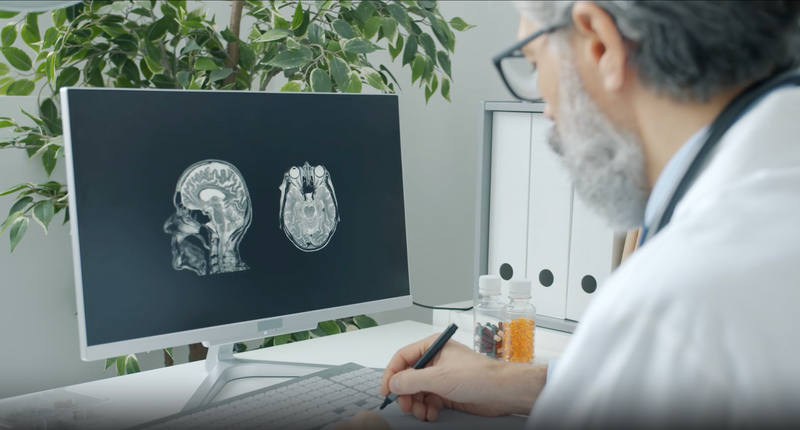
11 min read
Why Bleeding Gums Should Never Be Ignored: Early Signs of Bigger Problems
Bleeding gums are often dismissed as minor annoyances, but they should never be ignored. This common symptom can be an early indicator of oral health issues that may lead to serious problems if not addressed promptly. When gums bleed, it's typically a sign that inflammation is present, often due to the buildup of plaque—a sticky film of bacteria that harms gum tissue. Ignoring this warning could allow conditions to escalate, transforming simple gum irritation into more severe diseases like periodontal disease.
Common Causes of Bleeding Gums
Plaque Buildup and Its Role in Gum Inflammation
Plaque, a sticky film of bacteria that forms on your teeth, can irritate the gums if not adequately removed. Over time, this irritation can lead to inflammation, known as gingivitis, which is often marked by red, swollen, and bleeding gums.
Improper Brushing and Flossing Techniques That Harm Gums
Many individuals inadvertently harm their gums by using incorrect brushing techniques for gum health. Aggressive brushing with a hard-bristled toothbrush can cause the gums to bleed and recede. Similarly, incorrect flossing methods, such as forcing the floss too harshly into the gum line, can lead to cuts and bleeding. To prevent these issues, it's crucial to use a soft-bristled toothbrush, make gentle motions while brushing, and be cautious and precise when flossing.

Lifestyle Factors That Contribute to Gum Bleeding
Several lifestyle factors can contribute to bleeding gums, including smoking, poor diet, and stress. Smoking, in particular, is harmful as it reduces the mouth’s ability to fight off infections, leading to weaker gums that are prone to bleeding. A diet lacking essential vitamins, such as C and K, can also impair gum health and lead to bleeding. Additionally, stress can weaken the immune system, affecting the body’s ability to maintain healthy gums.
Underlying Health Conditions
Various underlying conditions can contribute to increased vulnerability of the gums, leading to issues such as inflammation and bleeding.
- Diabetes: Diabetes is a metabolic disorder that profoundly affects gum health through a series of complex physiological changes. In individuals with diabetes, elevated blood sugar levels can increase glucose concentration in saliva, creating an ideal environment for bacterial proliferation. This higher bacterial load heightens the risk of plaque accumulation and triggers an inflammatory response in the gum tissue, exacerbating conditions such as gingivitis and periodontitis. Moreover, diabetes can impair the body’s immune response, making it more challenging for the oral tissues to fight off infections effectively. Over time, the persistent presence of bacteria and inflammation may lead to the breakdown of connective tissue and bone that support the teeth, further compromising oral health. Poor glycemic control is also associated with reduced healing capacity, meaning that any damage to the gums might take longer to repair and could result in more severe complications. It is also worth noting that diabetes can alter the composition of saliva, reducing its natural protective properties.
- Pregnancy: During this period, elevated levels of hormones such as estrogen and progesterone can increase blood flow to the gum tissue, making it more sensitive and reactive. This heightened sensitivity often results in a condition known as “pregnancy gingivitis,” characterized by swollen, tender, and bleeding gums. The hormonal changes can also modify the immune response, reducing the body’s ability to combat the bacteria that cause plaque buildup. In addition, the shift in hormone levels can lead to increased plaque accumulation, as the body’s natural defense mechanisms are temporarily altered. These factors create an environment where even minor irritants can provoke an exaggerated inflammatory response in the gums. Pregnant individuals may also experience changes in oral hygiene routines due to morning sickness or fatigue, further complicating optimal gum health. The interplay between hormonal changes and oral bacteria underscores the necessity for enhanced dental care during pregnancy.
- Medications: Certain medications, including blood thinners, antidepressants, and anticonvulsants, can contribute to changes in the body that predispose individuals to gum bleeding and other oral health complications. For example, blood thinners alter the clotting process, leading to prolonged bleeding during routine brushing or minor gum injuries. Antidepressants and other psychotropic medications may cause dry mouth—a condition known as xerostomia—that reduces the saliva’s natural cleansing effect and its ability to neutralize acids produced by plaque-forming bacteria. This reduction in saliva increases the risk of tooth decay and leaves the gum tissues more vulnerable to inflammation and infection. Some medications can induce gingival overgrowth, where the gum tissue enlarges, making it difficult to maintain proper oral hygiene and increasing the likelihood of plaque retention. The cumulative effects of these medications underscore the importance of regular dental monitoring for patients under long-term pharmacological treatment.
Recognizing the ways in which underlying health conditions affect gum health is crucial for preventing and managing periodontal issues.
Effective Brushing Techniques for Gum Health
Proper Brushing Motions
The recommended method is to hold the oral scanner toothbrush at a 45-degree angle to the gums and use short, gentle strokes to clean the teeth and gum line. This technique helps to lift and sweep away plaque without irritating the gums. Oral hygiene solutions should also include brushing all surfaces of the teeth—outer, inner, and chewing surfaces—as well as the tongue to remove bacteria and promote fresh breath.
How Top Smart Toothbrushes Improve Gum Care
Incorporating technology into daily oral care, smart toothbrush brands have developed products that provide real-time feedback to improve brushing habits. These toothbrushes come equipped with sensors that monitor the pressure and coverage of each brushing session, alerting the user if they are brushing too hard or missing areas. This immediate feedback can help individuals adjust their techniques on the spot, which is crucial for protecting the gums from excessive force and ensuring thorough cleaning.
The Role of Toothpaste
Choosing the right toothpaste for gum care is pivotal in managing and reducing gum inflammation. Toothpaste formulated with ingredients like stannous fluoride or triclosan can help reduce plaque buildup and gum inflammation. Some toothpastes include herbal extracts such as aloe vera or chamomile, known for their soothing properties, which can be beneficial in calming irritated gums.

Gingivitis vs. Periodontal Disease: Understanding the Difference
Early Signs of Gum Disease
Symptoms such as redness, swelling, and bleeding during brushing or flossing should not be ignored, as they indicate gingivitis, the initial stage of gum disease. Taking prompt action by improving oral hygiene and seeking dental advice can prevent these symptoms from escalating into periodontal disease, which can lead to tooth loss and other serious health complications. This progression occurs when the bacteria in plaque cause the gums to become inflamed, forming pockets between the gums and teeth. These pockets harbor harmful bacteria, damaging the bone and connective tissue that hold teeth in place.
The Long-Term Health Risks
It has been linked to increased risks of heart disease, diabetes, respiratory issues, and pregnancy complications. The bacteria from inflamed gums can enter the bloodstream and affect other parts of the body, highlighting the critical nature of maintaining gum health, not just for oral wellness but also for overall health.
Professional Treatments and At-Home Care
To effectively combat gum disease, a combination of professional treatments and at-home care is necessary. Dentists may recommend procedures such as scaling and root planing to clean below the gum line and remove plaque buildup. At home, using tools like oral care technology and following a rigorous dental hygiene regimen are vital.
Natural Remedies and Lifestyle Changes for Healthier Gums
How to Stop Bleeding Gums
Implementing natural remedies for bleeding gums can effectively reduce inflammation and stop gum bleeding. Rinsing the mouth with a saline solution can help soothe irritated gums and decrease swelling. Similarly, applying a paste made from crushed garlic and a little salt can leverage garlic's natural antibacterial properties to combat the bacteria-causing gum issues. Also, incorporating vitamin C-rich foods into one’s diet can strengthen the gums and enhance the body's ability to fight infections.
The Best Natural Ingredients for Gum Healing
Several natural ingredients are known for their healing properties for gums. Aloe vera, known for its anti-inflammatory and healing effects, can be applied directly to the gums or used as a mouthwash after being diluted with water. Another effective ingredient is turmeric, which contains curcumin and is known for its potent anti-inflammatory properties; a paste of turmeric powder and water can be applied to the gums to reduce inflammation and pain.
The Impact of Diet and Hydration
A balanced diet and proper hydration work in tandem to create an oral environment that supports tissue repair reduces inflammation and minimizes the risk of gum disease. The following explores how specific dietary choices and adequate water intake contribute to healthier gums:
- Increase Water Intake: Consuming at least 8-10 glasses of water daily helps maintain optimal moisture levels in the mouth, encouraging the production of saliva. This constant flow of saliva helps clear away debris and prevents plaque formation, a major contributor to gum disease. Furthermore, water intake supports the natural cleansing process of the mouth by diluting sugars and acids, thereby reducing the risk of bacterial growth that can lead to inflammation and irritation of the gums. Adequate hydration also improves blood circulation to the gum tissues, facilitating the delivery of essential nutrients and oxygen required for tissue repair and regeneration. By prioritizing water consumption, individuals can significantly improve their oral environment, ensuring that gums remain firm and resilient against infection and disease.
- Eat Vitamin C-rich Foods: As mentioned, vitamin C is a powerful antioxidant that aids in repairing and regenerating connective tissues, including those that support the gums. Fruits such as oranges, kiwis, and strawberries, along with vegetables like bell peppers and broccoli, provide ample amounts of this essential nutrient. Regular consumption of vitamin C helps to strengthen the gum tissue, reducing the likelihood of bleeding and inflammation. This vitamin plays an integral role in collagen synthesis, which is necessary for maintaining the structural integrity of the gums and the surrounding bone. A diet high in vitamin C can improve the immune response, helping the body fend off infections that may otherwise lead to periodontal issues. The natural acidity in many vitamin C sources also contributes to an environment that discourages the growth of harmful bacteria.
- Include Calcium in Your Diet: Consuming calcium-rich foods such as dairy products, almonds, leafy greens, and fortified alternatives helps to build and maintain a robust foundation for oral health. Calcium is essential for developing and maintaining bone density, directly affecting the jawbone that anchors your teeth. Calcium works synergistically with other nutrients, such as vitamin D, to ensure efficient absorption and utilization within the body. This collaboration between nutrients bolsters the strength of the teeth and bones and aids in the repair and regeneration of gum tissues. Adequate calcium intake also helps to neutralize acids in the mouth, further protecting the enamel and preventing decay.
- Omega-3 Fatty Acids: Omega-3 fatty acids, found in foods such as fish, flaxseeds, chia seeds, and walnuts, are renowned for their anti-inflammatory properties, which have a significant impact on gum health. These essential fats help reduce inflammation throughout the body, including in the delicate tissues of the gums, which can become irritated by plaque and bacterial invasion. By incorporating omega-3-rich foods into your diet, you are providing your body with nutrients that support cardiovascular and neurological health and actively working to calm the inflammatory processes that can lead to periodontal disease. The anti-inflammatory effects of omega-3s reduce the severity of gum swelling, bleeding, and pain, making them an important component of any strategy to prevent chronic gum conditions. Moreover, omega-3 fatty acids can enhance the overall immune response, ensuring that the body is better equipped to handle bacterial challenges in the oral cavity.
- Limit Sugary Foods and Beverages: High-sugar diets promote the growth of bacteria that thrive on sugars, which produce acids as byproducts that erode tooth enamel and irritate the gum tissues. This acid production, combined with bacterial proliferation, contributes significantly to the development of plaque and tartar, escalating the risk of gum inflammation and periodontal disease. Limiting sugary foods and beverages can help maintain a more balanced oral environment that is less conducive to bacterial overgrowth. Reducing sugar consumption protects the enamel and decreases the likelihood of cavities, which can further compromise gum integrity. It is important to note that the frequency of sugar intake plays a critical role; frequent snacking on sugary items continuously exposes the teeth and gums to harmful acids, increasing the risk of decay.
When integrated into daily life, these nutritional strategies serve as powerful tools in the ongoing effort to maintain a healthy and resilient mouth.

In today’s tech-driven world, smart oral health monitoring plays a pivotal role in enhancing traditional oral care methods. Using dental health devices that provide feedback on brushing techniques or help track gum health can significantly improve oral hygiene practices. Coupling these technologies with healthy lifestyle choices ensures a comprehensive approach to gum health. Embracing these practices will not only promote healthier gums but also contribute to the overall well-being of individuals.
Share




